Contact lenses are a fantastic option for people who don’t wish to wear eyeglasses anymore and still need effective vision correction. However, contact lenses can be uncomfortable for people who suffer from dry eye disease.
The last thing we want is for you to be uncomfortable while wearing contact lenses. Luckily, there are solutions to treat your unique dry eye symptoms and make wearing contacts simple, comfortable, and stress-free.
What is Dry Eye Disease
Dry eye disease affects your tear film, which lubricates your eye surface every time you blink. Over 16 million people struggle with irritation, discomfort, and pain caused by dry eye.
3 distinct layers make up your tear film and work together to keep your eye surface lubricated:
- The mucus layer is the innermost layer and helps your tear film spread evenly across your eye surface
- The water layer is the middle layer and keeps your eye hydrated and free of dust and dirt particles
- The oil layer is the outermost layer and effectively prevents your tears from evaporating too quickly
There are 2 types of dry eye disease: aqueous deficient dry eye and evaporative dry eye. Aqueous deficient dry eye occurs when your lacrimal glands don’t produce enough substance for the water layer to function correctly.
Evaporative dry eye is the more common condition, often resulting from meibomian gland dysfunction (MGD). Your meibomian glands secrete an oil called meibum, which protects your tears and prevents them from evaporating too quickly. MGD is most often a result of blocked glands that cut off the oil from mixing into your tear film.
Wearing Contacts with Dry Eyes
Wearing contact lenses can be uncomfortable if you have dry eye disease. Wearing contacts for long periods can directly cause dry eyes. Since a typical contact sits on your cornea, it can block your tear film from reaching the eye surface.
Contact-lens-induced dry eye may also result from your cornea not receiving enough oxygen. Your cornea is the only part of your body that receives oxygen directly from the air. Oxygen absorption can be more difficult with a contact lens sitting on the cornea.
Specialty Contact Lenses
One of the most effective solutions for people with dry eye disease to wear contact lenses is switching to scleral lenses. Scleral lenses are more prominent than regular contact lenses, sitting on the white part of the eye called the sclera instead of the cornea.
Since scleral lenses are larger, there is a gap between the lens and the eye surface. This gap contains a saline solution that constantly hydrates the eye surface. The separation also reduces the chance of eye irritation usually caused by regular contact lenses.
Scleral lenses also benefit from being rigid gas permeable (RGP). RGP lenses allow oxygen to pass through the lens material and be absorbed by the cornea, reducing your dry eye symptoms and leaving you with comfortable vision.
Dry Eye Treatment Options
In addition to scleral contact lenses, several treatment options are available to reduce your symptoms based on your specific dry eye condition. Your doctor can help you uncover the direct cause of your dry eye and recommend a treatment plan that works for you.
OptiLight by Lumenis
OptiLight by Lumenis is an intense pulsed light therapy machine to improve symptoms related to meibomian gland dysfunction. OptiLight uses precise pulses of light to treat the skin around your eyes where your meibomian glands are located. It is a recommended treatment option if you suffer from evaporative dry eye.
Equinox
Equinox is a low-level light treatment (LLLT) that also helps improve meibomian gland function. It uses light to melt blockages in your meibomian glands and help them correctly secrete meibum into your tear film’s oil layer.
LipiFlow
LipiFlow gently heats the meibomian glands to provide relief for evaporative dry eyes. The treatment takes only 12–15 minutes. Your doctor will perform an eye exam to determine if LipiFlow is right for you.
Treatment Products
Treatments such as lubricating eye drops, lid scrubs, dry eye masks, and vitamins are all effective options you can use at home to treat dry eyes. These are all products you can order or pick up yourself; however, you should only purchase them with a doctor’s recommendation.
Dry Eye Center in Connecticut
We’re committed to providing effective, evidence-based solutions for dry eye treatment when you come to us. Whether you want to get fitted for scleral contact lenses or to learn more about dry eye treatment options, we’re here to help. You don’t need to live with uncomfortable, gritty, painful dry eyes. Get the care you deserve. Book an appointment today.




